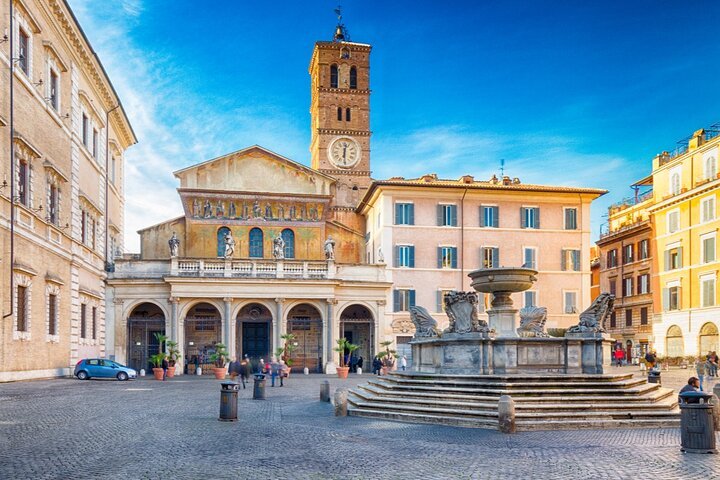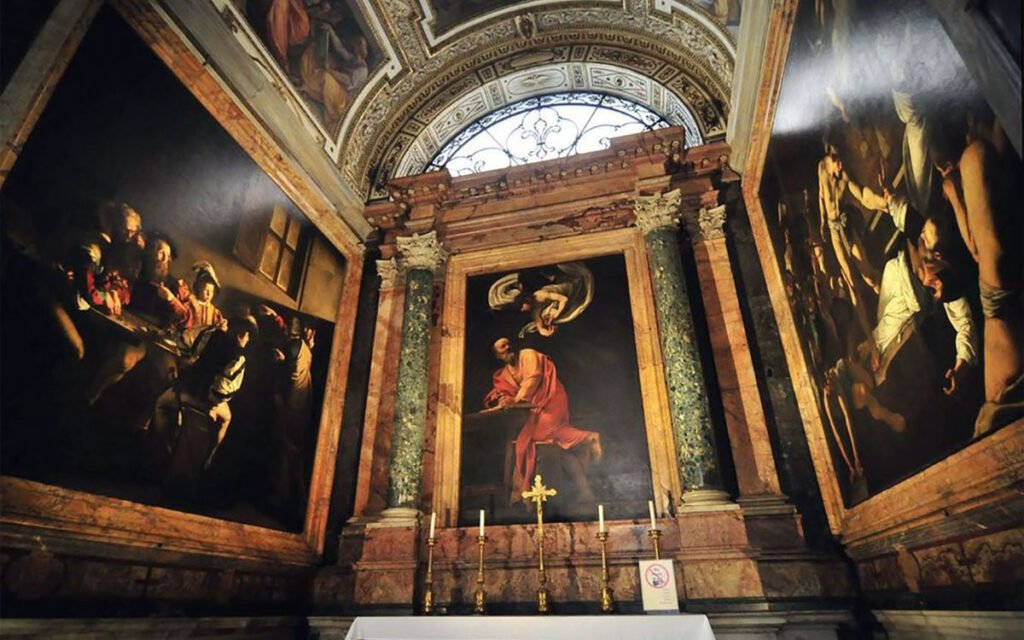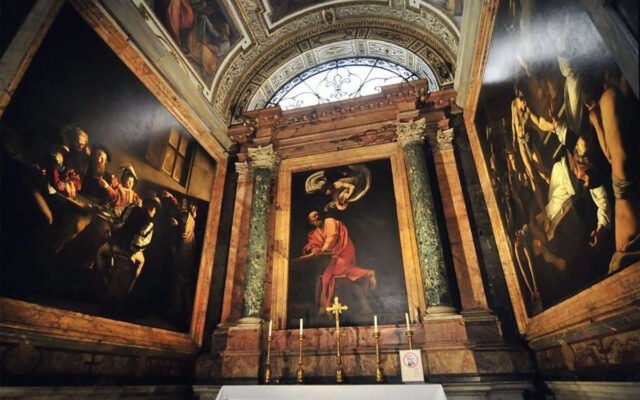Rome’s historic churches are treasures of spiritual and artistic heritage, many of which are often overshadowed by the grandeur of the Papal Basilicas. These lesser-known sanctuaries, however, hold stories of faith, artistry, and resilience that make them unmissable during the Jubilee 2025 pilgrimage. Beyond their religious significance, these churches are home to fascinating histories, quirky details, and architectural splendours that provide a more intimate connection to Rome’s sacred past.
Santa Prassede: The Jewel of Byzantine Mosaics
Nestled a stone’s throw from the grand Basilica of Santa Maria Maggiore, the Basilica of Santa Prassede is a dazzling example of early Christian art. Dedicated to St. Praxedes, the daughter of a Roman senator who devoted her life to burying Christian martyrs, this church is renowned for its vibrant mosaics that date back to the 9th century.
The apse mosaics, commissioned by Pope Paschal I, are a feast for the eyes, depicting Christ in Majesty surrounded by saints and angels. The Chapel of St. Zeno, also known as the “Garden of Paradise,” is a highlight, adorned with intricate mosaics featuring gold leaf that shimmers in candlelight.
Funny Fact: Legend has it that one of the mosaics contains an unusual “Easter egg”—a tiny hand poking out from the side of an angel’s robe. Scholars speculate it represents divine assistance, but it’s also a quirky reminder of the human touch in ancient craftsmanship.
Santa Sabina: Rome’s Quiet Refuge
Perched on the Aventine Hill, Santa Sabina is one of the oldest churches in Rome, built in the 5th century. This serene church offers breathtaking views of the city and a peaceful escape from Rome’s bustling streets. Its simple yet elegant interior is a masterclass in early Christian architecture, featuring a wooden door from the 5th century carved with biblical scenes, including one of the earliest depictions of the Crucifixion.
The church’s tranquil courtyard is a perfect spot for reflection, with orange trees said to have been planted by St. Dominic himself, founder of the Dominican Order.
Funny Fact: Look closely at the wooden door panels—they’re over 1,500 years old and remarkably well-preserved. One of the panels has a curious carving of a man balancing on a goat, which some historians interpret as an ancient joke or even a subtle criticism of Roman rulers of the time.
San Clemente: A Journey Through Layers of History
San Clemente, near the Colosseum, is not just a church—it’s an archaeological treasure. This 12th-century basilica stands atop a 4th-century church, which in turn is built over a 1st-century Roman villa and a Mithraic temple. Descending through its layers feels like a journey through time, from early Christianity to pagan Rome.
The basilica’s stunning apse mosaic, depicting the Tree of Life, is a masterpiece of medieval art. Below, the Mithraic temple offers a glimpse into the mysterious cult of Mithras, complete with an altar and a frescoed underground room.
Funny Fact: The frescoes in the lower level include an inscription written in vulgar Latin, mocking a man for his loud snoring. It’s considered one of the earliest examples of graffiti in Christian Rome.
Santa Maria in Trastevere: Rome’s Neighbourhood Gem
Santa Maria in Trastevere is one of the city’s oldest churches, founded in the 3rd century by Pope Callixtus I. Situated in the lively district of Trastevere, this church combines stunning mosaics with a warm, community atmosphere.
Its mosaics, particularly those in the apse created by Pietro Cavallini, depict the life of the Virgin Mary with remarkable detail and emotion. The church is also known for its Romanesque bell tower, adorned with a Madonna and Child mosaic.
Funny Fact: Local legend says the church’s site was marked by a miraculous fountain of oil that flowed for a day in 38 BCE. The Romans called it a sign of the coming of Christ, though modern geologists suggest it might have been a natural oil seepage.

Santi Quattro Coronati: A Fortress of Faith
The Basilica of Santi Quattro Coronati, dedicated to four anonymous martyrs, resembles a medieval fortress rather than a typical church. This unique characteristic is due to its history as a refuge during the turbulent Middle Ages. Located near the Colosseum, it is home to some of Rome’s most enchanting frescoes, hidden in the Chapel of St. Sylvester.

These frescoes illustrate the story of Emperor Constantine’s conversion to Christianity and feature vivid depictions of medieval life, including knights, nobles, and monks.
Funny Fact: The basilica’s bell tower once doubled as a lookout for spotting marauding invaders. A monk stationed there reportedly rang the bells so vigorously during one raid that he broke the clapper!
San Luigi dei Francesi: Home to Caravaggio
San Luigi dei Francesi, the national church of France in Rome, is a haven for art lovers. Its Contarelli Chapel houses three masterpieces by Caravaggio, depicting scenes from the life of St. Matthew. These dramatic paintings, including The Calling of St. Matthew, are celebrated for their revolutionary use of light and shadow.
Funny Fact: During the Renaissance, the church hosted lively debates among French scholars and artists. Rumour has it that one of Caravaggio’s models for St. Matthew was a notoriously grumpy waiter from a nearby tavern.

Visiting These Hidden Gems During Jubilee 2025
These historic churches offer more than spiritual nourishment—they provide a deeper understanding of Rome’s rich cultural and religious heritage. Each church has its own character, quirks, and beauty, making them a vital part of the Jubilee experience.
For pilgrims, these hidden gems offer moments of quiet reflection away from the bustling crowds of Rome’s main attractions. Whether marvelling at mosaics, uncovering ancient graffiti, or admiring Caravaggio’s artistry, these sacred spaces connect the faithful with the timeless story of the Church.
During Jubilee 2025, these churches will be open to welcome pilgrims from around the world, serving as reminders of Rome’s unique role as a bridge between history, faith, and art.










